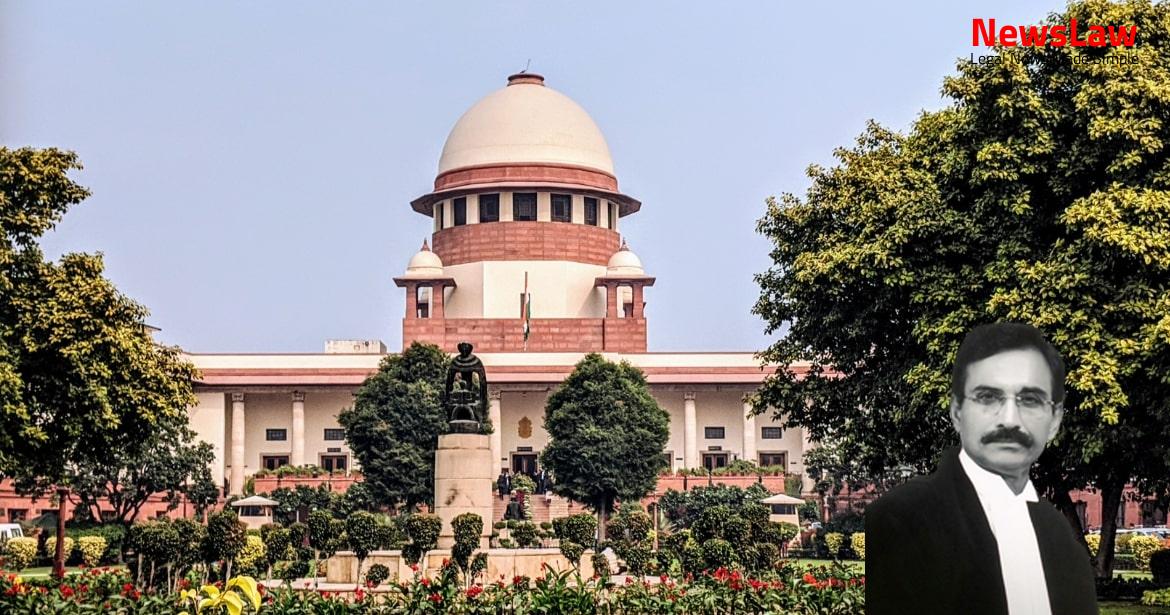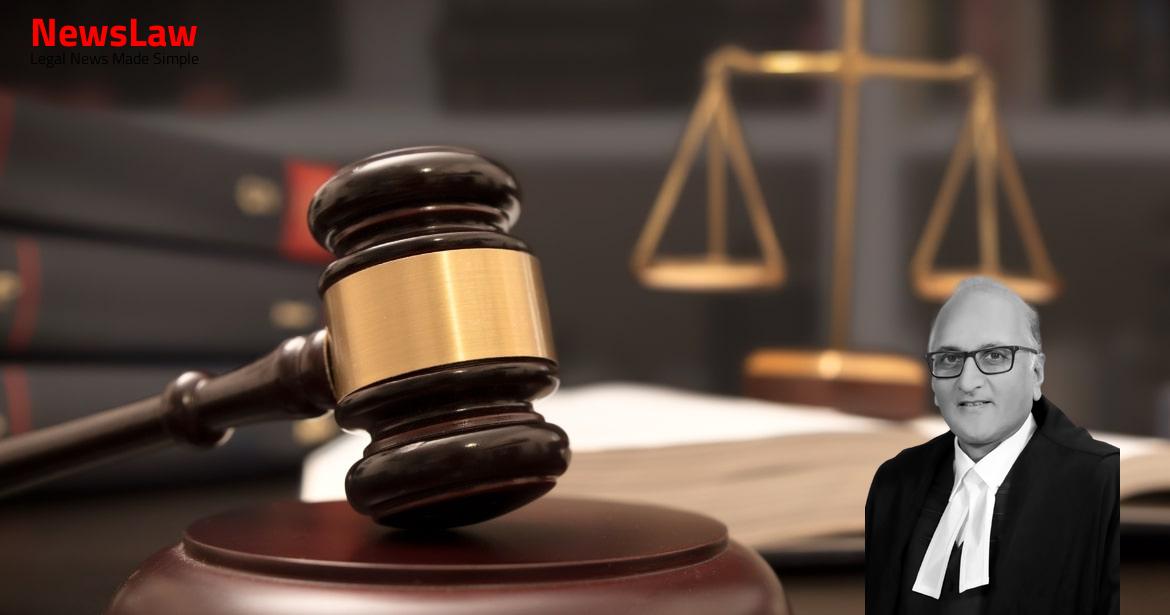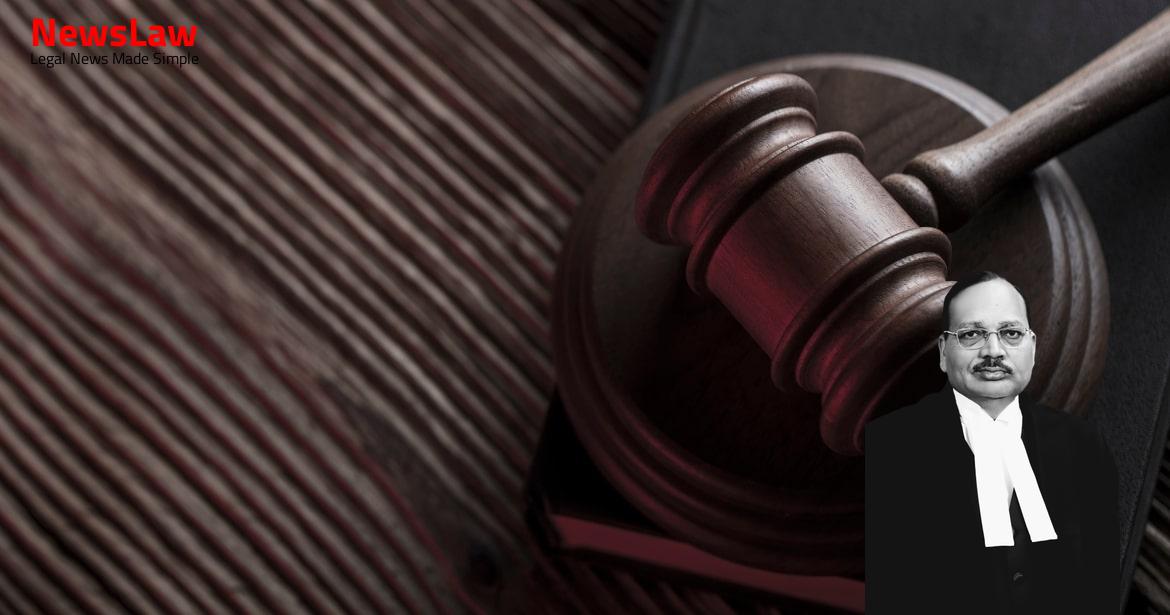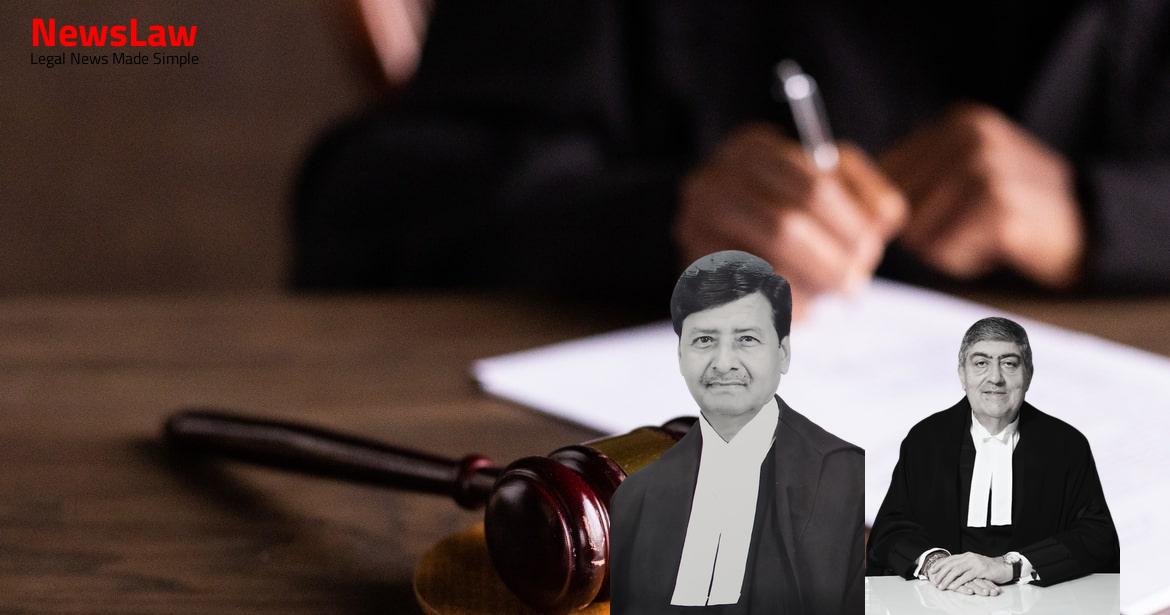Delve into the intricate legal analysis by the High Court surrounding the interpretation of the Scheduled Castes and Scheduled Tribes (Prevention of Atrocities) Act. The court’s thorough examination of the Act’s provisions sheds light on crucial aspects of the law, providing valuable insights into the application and implications of the legislation.
Facts
- The High Court of Uttarakhand dismissed the petition filed by the appellant under Section 482 of the Code of Criminal Procedure, 1973 on 20.7.2020.
- The FIR No 174 was lodged based on the statement of Mr. Pawan Verma for an incident on 11.12.2019 at 9:45 hours.
- The Appellant challenged the charge-sheet and order taking cognizance through a petition under Section 482 of the Code before the High Court.
- Cognizance was taken for offences under Sections 323 and 354 IPC against respondent No 2 and others on 2.7.2020.
- The FIR was lodged for offences under Sections 452, 504, 506 IPC, and Section 3(1)(x) and 3(1)(e) of the Scheduled Castes and Scheduled Tribes (Prevention of Atrocities) Act, 1989.
- The High Court dismissed the petition
- Provisions of the Act were found to be applicable
- Charge-sheet has been submitted after investigation
Also Read: C.A. No.-003966-003966 / 2020
Arguments
- The appellant’s counsel argued that the property disputes are pending before the Civil Court and the current FIR is filed on false grounds by respondent No 2 to harass the appellant.
- The appellant’s counsel mentioned that the allegations in the FIR and police report do not disclose any offense under the Act.
- The counsel also highlighted that the report does not mention the caste of the informant or that the allegations were made in public view.
- It was further argued that the offending words were not based on the informant belonging to a Scheduled Caste.
- The State’s counsel argued that during investigations, certain persons supported the informant’s version, claiming the appellant’s family to be encroachers on the informant’s land.
- The State’s counsel upheld the decision of the High Court to not grant any indulgence to the appellant.
Also Read: Legal Analysis on Company’s Non-Conviction and Re-Trial Order
Analysis
- The Court held that in a case for applicability of Section 3(2)(v) of the Act, the fact that the deceased belonged to Scheduled Caste would not be enough to inflict enhanced punishment.
- The Court emphasized that proceedings can be quashed under Section 482 of the Code if there is a false and unsubstantiated FIR.
- The Court referred to a case where allegations of hurling abuses in the name of caste were made, and the complaint was quashed.
- It was observed by the High Court that the appellant admitted that the informant belonged to Scheduled Caste and had been abused.
- In another case, where the caste of the accused was not mentioned in the FIR, the Court refused to quash the FIR, indicating varying approaches to cases involving caste issues.
- The Court clarified that there is no prohibition under the law for quashing a charge-sheet in part under Section 482 of the Code.
- High Courts, when considering petitions under Section 482, are tasked with determining whether their intervention is necessary to prevent abuse of the legal process or to uphold justice.
- The Court emphasized that for an offence to be considered as occurring ‘in any place within public view’, the presence of members of the public (not just relatives or friends) is essential.
- The judgment of the Court in Swaran Singh was cited to establish that an offence committed within the four walls of a building, without any public presence, does not fulfill the criteria of being in public view.
- The High Court misinterpreted the judgment in Ashabai Machindra Adhagale by focusing on the caste of the victim rather than the accused, leading to erroneous quashing of proceedings.
- The essence of the judgement was to highlight that invoking the civil court by either party does not indicate discrimination or offences under the Scheduled Castes and Scheduled Tribes (Prevention of Atrocities) Act unless the actions are solely based on caste-related humiliations.
- The Act aims to address the socio-economic conditions of the marginalized sections by penalizing actions intended to demean, intimidate, or harass them based on their caste.
- Property disputes between social sections do not inherently constitute offences under the Act unless the allegations involve mistreatment solely due to caste affiliation.
- The distinction between ‘public place’ and ‘any place within public view’ was clarified by the Court to underscore the necessity of public presence for an act to fall under the latter category.
- The presence of witnesses in the charge-sheet does not automatically imply their presence at the time of the alleged offence within the building.
- The Act establishes provisions to protect vulnerable sections from discriminatory practices and ensure their dignity and rights.
- Section 3(1)(r) of the Act deals with intentional insults or intimidations with the intent to humiliate a member of a Scheduled Caste or a Scheduled Tribe in public view.
- The Act aims to prevent atrocities against Scheduled Castes and Scheduled Tribes and provides for Special Courts for the trial of such offences.
- The Act was enacted to improve the socio-economic conditions of vulnerable sections of society who have been subjected to various offences like indignities, humiliations, and harassment.
- The Act punishes violators who commit offences as defined under Section 3, specifically targeting acts of the upper caste against vulnerable sections based on their community.
- The charge-sheet in question is for an offence under Section 3(1)(x) of the Act, indicating that all insults or intimidations must be on account of the victim belonging to a Scheduled Caste or Scheduled Tribe to be considered an offence under the Act.
- To establish an offence under Section 3(1)(r), intentional insult and intimidation with the intent to humiliate a member of a Scheduled Caste or Scheduled Tribe must be proven.
- Charges under Section 3(1)(r) of the Act were not made out against the appellant.
- The charge-sheet in this regard is quashed.
- Other offenses mentioned in the FIR will be tried by the competent court separately, as they relate to the same subject matter of property, despite differing incident dates.
Also Read: Critical Analysis of Circumstantial Evidence in Arson Case
Decision
- The Court held that
- The Court also emphasized on
- It was further mentioned that
Case Title: HITESH VERMA Vs. THE STATE OF UTTARAKHAND (2020 INSC 636)
Case Number: Crl.A. No.-000707-000707 / 2020



